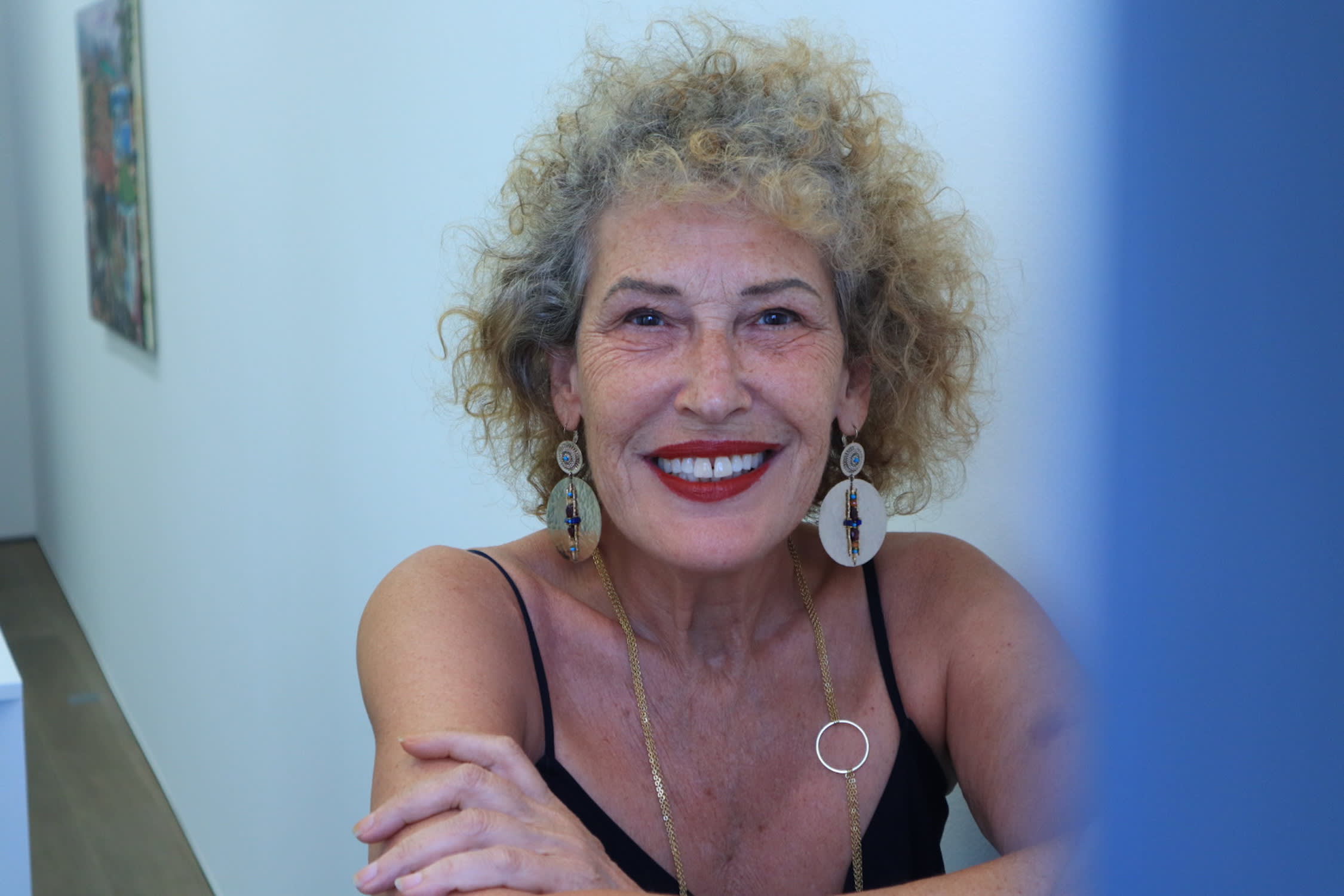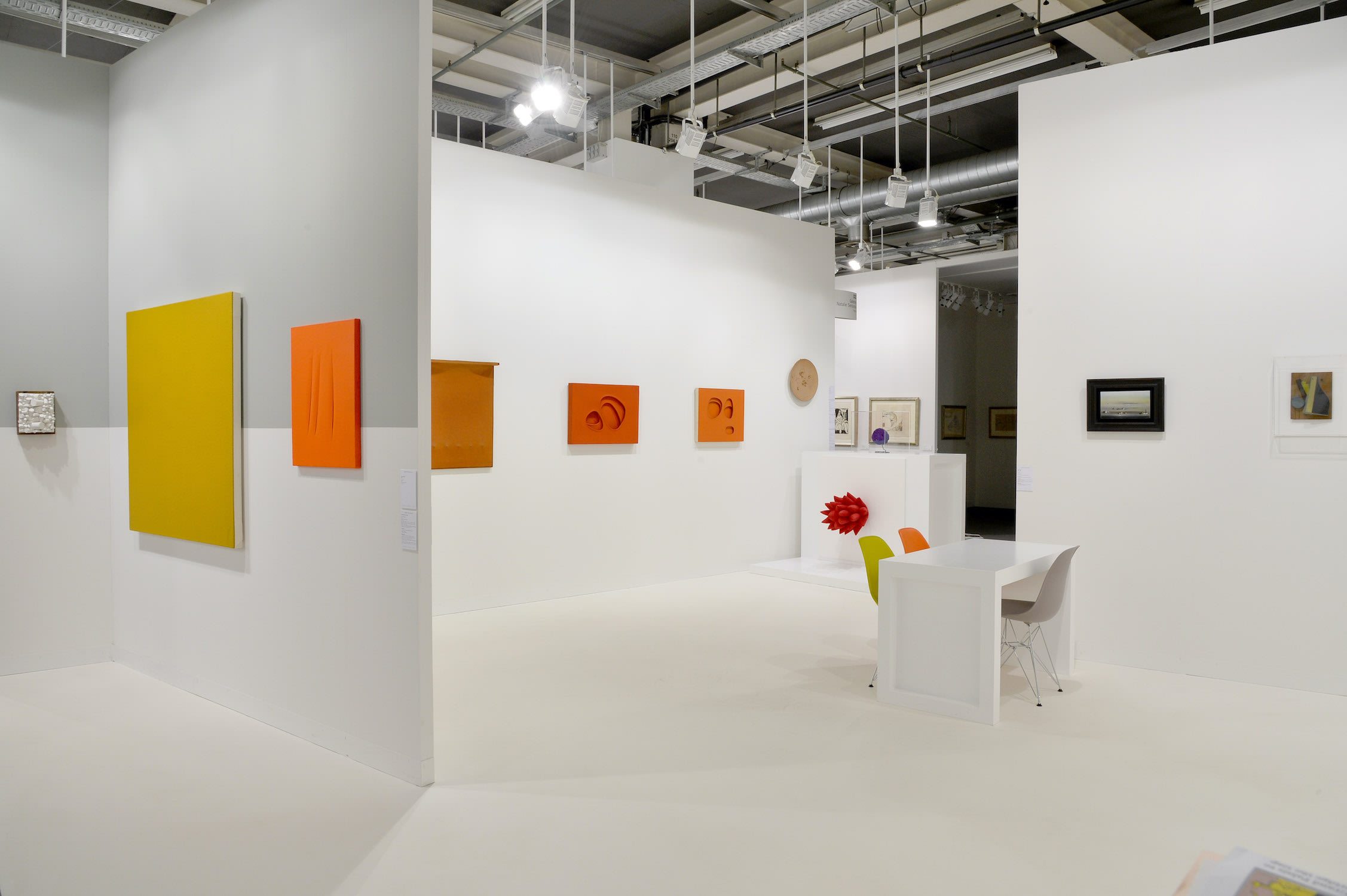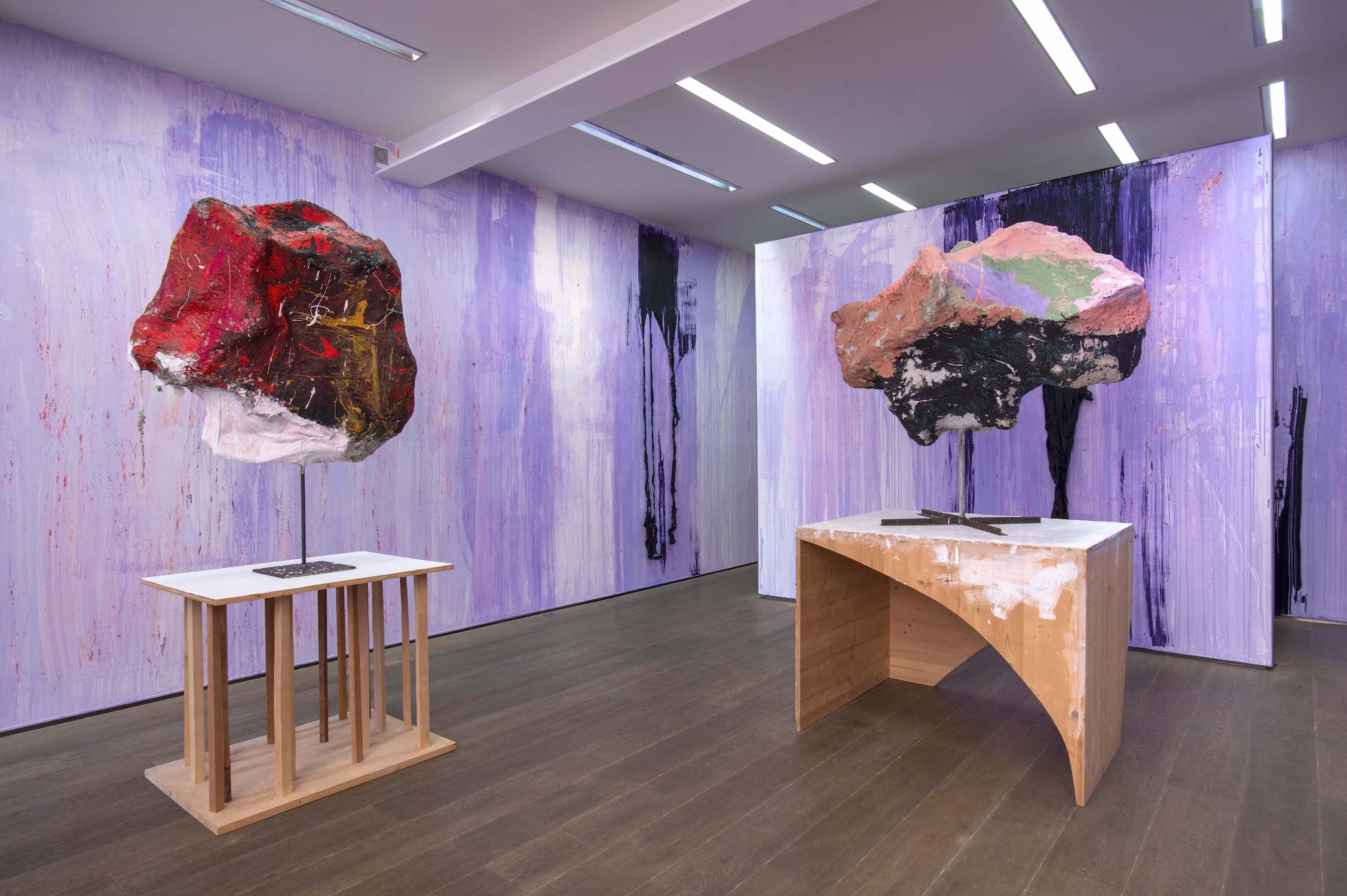From Tomás Saraceno to Hannah Höch, Natalie Seroussi writes her own art history
The Surrealism specialist has a keen eye for contemporary art, too
Melden Sie sich an oder richten Sie ein Benutzer*innen-Konto ein. So können Sie Art Basel Stories abonnieren und direkt in Ihren Posteingang bekommen.
Although she's known for her expertise in Surrealism and 20th century avant-gardes, Natalie Seroussi often exhibits contemporary artists in dialogue with modern masters. Since founding her Paris gallery in 1977, Seroussi has been expanding the scope of her exhibitions, a development that has been mirrored in her annual presentations at Art Basel in Basel since 1981. Here, she reflects on her relationship with Ernst Beyeler, one of Art Basel’s three co-founders, and what it means to be a secondary-market gallery. Her son Julien, who joined Galerie Natalie Seroussi’s team in 2017, also chimes in to share a secret: his mother's auction house nickname.
Clément Dirié: If we talk about your history with Art Basel, one name immediately comes to mind…
Natalie Seroussi: Ernst Beyeler! He was a very nice man who taught me so much and I have so many memories of him. I remember he often came to my booth asking me to go for a walk. I would tell him, ‘I can’t, I have to stay here,’ and he would say, ‘Don’t worry. I have a solution.’ Then he’d get someone from his team to man my booth and we’d go play pétanque with some other friends or eat cherries from his garden – it seems very different than today. My walks with Ernst also took place in the fair halls, where we would go visit colleagues. I very much liked – and still like – to walk around and see what other gallerists were showing.
On a more serious note, when I opened my gallery, I went to Ernst and explained that I had neither money nor a single painting. He was very generous and let me choose works from his own inventory to sell. I don’t know anyone else who would have done that. I also remember Sam Keller, the former director of Art Basel, coming every year to visit my booth and talk about the works, as friendly as Ernst was. In 2008, Sam even took me and Julien, who was making a precursory visit to Basel, to a football match in the stadium built by Herzog & de Meuron.

CD: Can you tell me about the first time you participated in Art Basel?
NS: Well, I opened my first gallery in 1977 near the Centre Pompidou, the same year it opened. At the beginning, I mainly devoted myself to 1920s Constructivism, Suprematism, and Abstraction-Création. I took part in Art Basel for the first time in 1981 and I had only done one other fair before then: FIAC in Paris with an 18-square-meter stand!
I remember my first time in Basel very well. I did the customs procedures myself, put all the paintings in my little car, and drove from Paris. I had organized an exhibition of black-and-white drawings by Wassily Kandinsky, Fernand Léger, Robert Delaunay, and a few other lesser-known artists like the Italian poet and painter Ardengo Soffici.
Art Basel immediately introduced me to an international public and collectors, which opened up a world that was very different from the Parisian art scene. It was an exciting experience. Even today, Art Basel is still the world’s leading art fair, where people from all over the world converge. Although it’s changed with things like presales and digitalization, there is still an intense level of artistic and business integrity that is unique to Art Basel.
CD: What are some of your strongest memories of Art Basel throughout the years?
NS: My first memory is the fabulous exhibition that I organized with Ernst in the late 1980s of paintings from the Solomon R. Guggenheim Museum’s collection. I also fondly remember the way Jim Goodman set up his unauthorized booth on the bench opposite Galerie Beyeler’s booth and sold Ektachromes. Another vivid memory is of the project ‘14 Rooms’, in 2014, when one of the Messeplatz halls was taken over by performance art. The exchanges between the visitors and the surprise created by each proposal – by artists ranging from John Baldessari to Joan Jonas to Santiago Sierra – were very stimulating.

CD: Do you have any Art Basel rituals or routines?
NS: There’s the annual pilgrimage to the Foundation; the visit to the Schaulager and the Tinguely Museum; the midday sausage in the inner courtyard. There’s also always dinner on the terrace of the hotel Krafft Basel on the Sunday before the opening; strolling through the works in the Parcours sector which are scattered throughout the city; seeing certain collectors who I only see once a year, almost at the same time on the same day, year after year; and Gian Enzo Sperone buying a painting from me for his collection almost every year before the opening. Hanging the works is also something I really love to do, something I need both physically and emotionally.
CD: In the 1980s, were visitors and collectors surprised to see a 20-year-old woman exhibiting and selling works from the early 20th century?
NS: Perhaps, but I didn’t think of it as an oddity. I was showing what I loved and knew. At the time, I didn't know much about Contemporary art. I knew American art from the 1950s–60s and Nouveau Réalisme. In the end, I moved forward in time as I went along. I started with the 1920s and now I also show contemporary artists. I have gone through 100 years of history in 40 years!
CD: But the opening exhibition at your second gallery on Rue de Seine in 1983 was an exception to this forward movement.
NS: True. I opened the second gallery with an exhibition by the Italian artist Sandro Chia, a key figure of the Transavantguardia. The opening was a huge success – from one day to the next, I had sold everything. I even had a waiting list; I could choose my clients. I said to myself, ‘What kind of job is this?!’ My second exhibition in that space was devoted to the futurist artist Giacomo Balla; I sold one drawing to an important collection and that was it. I understood then how capricious this job can be!
CD: I would like to know how a secondary market gallery worked in the 1980s. Although the fundamentals were the same – documentation, finding collectors, sourcing works – other parameters must have changed.
NS: In the early 1980s, modern art was still accessible and there were numerous works on the market. I bought everywhere: in galleries, from private collectors, at public auctions. With the public auctions, people attended the evening sales, but no one attended the daytime sales. We could get great deals. Of course, you still had to have some money to buy, which was not often my case. A lot of masterpieces came up for sale in those years, I’m thinking particularly of Julian Levy’s extraordinary collection of Surrealism. Collectors also came to me for expertise and advice – they still do – and that’s how you build a network.

CD: In 2017, your son Julien joined the gallery. How did that happen?
NS: Julien had worked in international criminal justice for 15 years and he joined with the desire to foster more intergenerational dialogues. Bringing Modern and contemporary art into dialogue is something that I initiated, but that we do more regularly now. We’ve shown Dorothy Iannone with Hannah Höch, Tomás Saraceno with Alexander Calder, Thu Van Tran with Franz West, and so on. I have always been interested in drawing threads between movements and epochs.
Julien Seroussi: You know, my parents only talk about art: at lunch, on Saturdays, on Sundays, during vacations. Working at the gallery came quite naturally once I had proven myself in a completely different area. I find my mother’s background impressive – starting so young with Modern art when there was no history with art in family, it was a big risk. I really enjoyed following her experiments and passions. You should know that Natalie’s nickname in the auction rooms is ‘The Wild Eye’!
CD: A great nickname, particularly for a gallerist specialized in Surrealism.
NS: And especially when you know that, as a child, I had eye problems! I think this nickname means that I know how to look elsewhere, to anticipate, and to remain open to discoveries. I am not a prisoner of my expertise; I show Modern and contemporary art, but also am interested in poetry, architecture, etc. I envision art as a whole, not just as a market, as it often appears today. I also like the idea of looking at Modern works of art as if they were contemporary. I think that’s what I like about Art Basel: the opportunity to see so many works together and to build one’s own art history.
Top image: Lucio Amelio, Natalie Seroussi, and Ernst Beyeler at Art Basel, 1989. Photo: Kurt Wyss.

